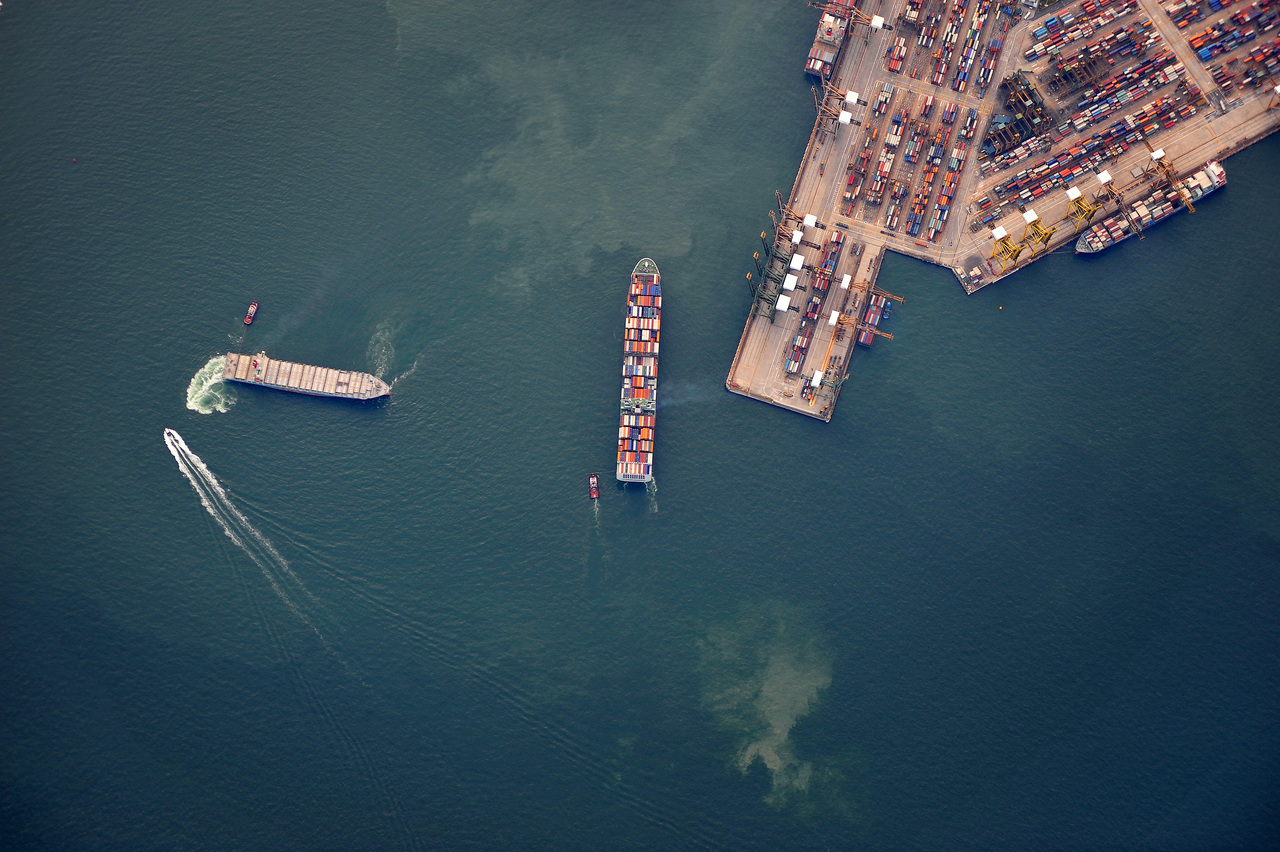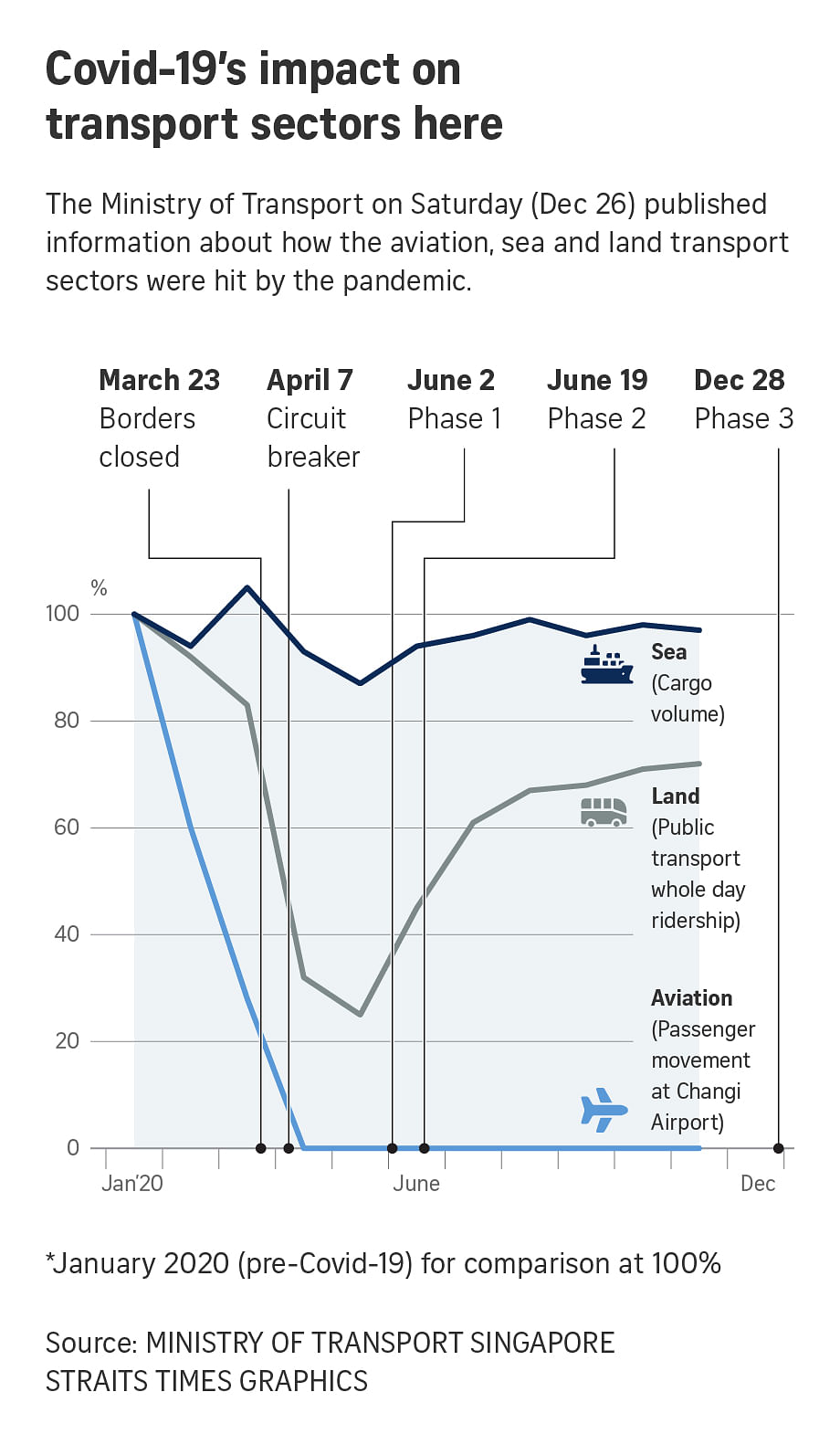S'pore's air passenger traffic still low but sea cargo volume back at pre-pandemic levels
Sign up now: Get ST's newsletters delivered to your inbox

Singapore's sea cargo volume has hovered around the same levels.
PHOTO: ST FILE
Follow topic:
SINGAPORE - While Covid-19 has nearly wiped out air passenger movement, ridership on public transport has bounced back, and sea cargo volume is almost at pre-pandemic levels, said the Ministry of Transport (MOT).
Singapore's public transport ridership now stands at more than 70 per cent of what it was at the start of the year, according to figures released by the ministry in a Facebook post on Saturday (Dec 26).
Passenger movement at Changi Airport in April plummeted to 0.4 per cent of what it was at the start of the year, MOT's numbers showed. Singapore closed its borders to travellers on March 23 and went into the circuit breaker period on April 7.
Air passenger numbers have been creeping up since then, and as at November, MOT said the figure stands at 1.9 per cent.
Commenting on the figures in a separate Facebook post, Transport Minister Ong Ye Kung said air transport remains challenging.
He had earlier in the year underscored the importance of rebuilding air links to the country and said the longer Singapore's borders remain closed, the greater the risk of it losing its air hub status, which is critical to its economy.
MOT's data showed how public transport's whole day ridership fell as a result of Singapore's safety measures. In April, the number of passengers taking public transport fell to 32 per cent from the beginning of the year. This fell further to 25 per cent in May but started to pick up after that, and was at 72 per cent last month. Mr Ong said the numbers plunged as a result of the circuit breaker.
Touching on the performance of the maritime sector, Mr Ong said it was a "bright spark during such difficult times".
Data from MOT showed that Singapore's sea cargo volume has hovered around the same levels. Compared with the start of the year, the volume of sea cargo stood at 97 per cent in November.
"Our port remains open, goods were flowing. We even managed to develop 'safe corridor' procedures for crew change that were viewed as international maritime best practice," said Mr Ong.
"Looking ahead, we are partnering the industry to push more strongly for digitalisation and innovation while we grow our maritime talent pool."
The Government has been providing help to the maritime industry. Earlier this month, it announced that it was extending aid for more affected sectors in the industry to tide them over the pandemic, under the MaritimeSG Together Package.
This includes financial assistance for seafarers, port dues concession for ships that carry passengers, and extension of credit terms for maritime companies.
The MaritimeSG Together Package took effect on May 1 to provide support for shipping companies, Singaporean seafarers and people undergoing maritime training, to the tune of $27 million.

Correction note: An earlier version of this story said that passenger movement at Changi Airport in April was 0.004 per cent and in November was 0.019 per cent. MOT has since clarified and the figures have been updated.

